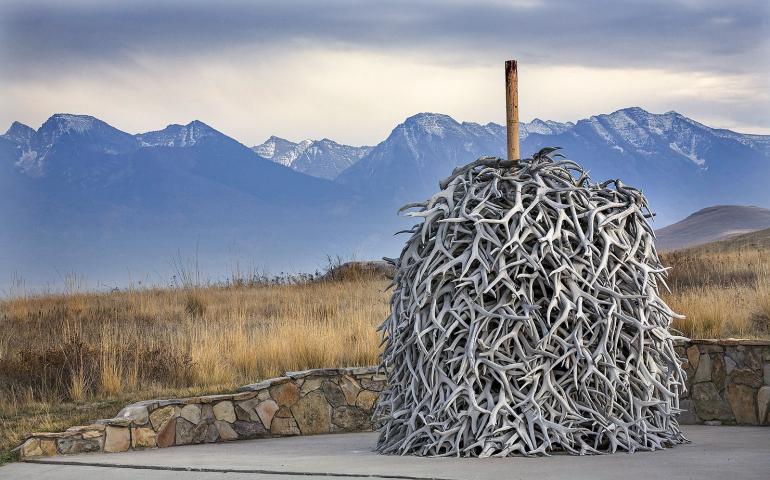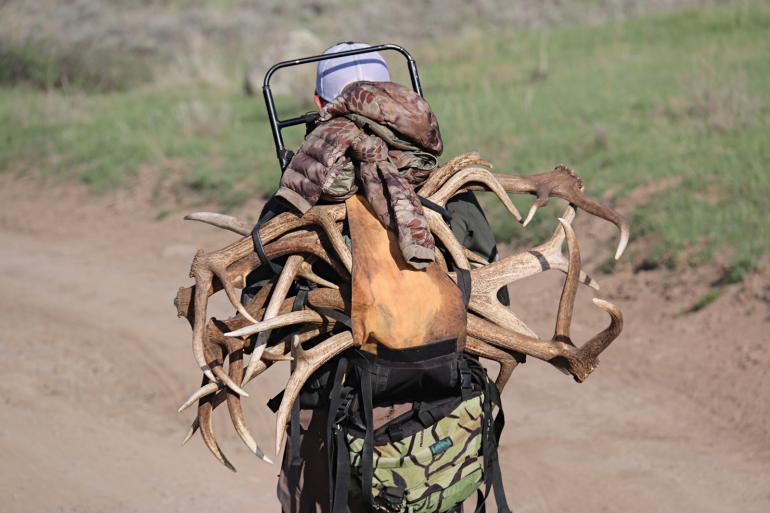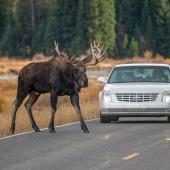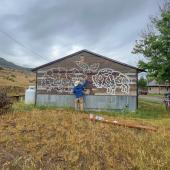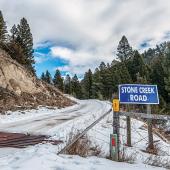Let ’Em Lay ’til May
A plea for ethical shed hunting.
Montana’s elk and deer herds don’t have it easy: suburban sprawl and trophy homes filling up their low-elevation wintering grounds, robust populations of two- and four-legged apex predators, and a scarcity of safe passages over or under the increasingly busy traffic arteries bisecting the state. On top of that, they’re vulnerable in early spring. The majority of cows and does are pregnant with the future of the herd, and are slowly burning through their precious fat reserves after a winter of foraging on nutrient-poor grass and shrubs. At the same time, an increasing number of outdoor enthusiasts are strapping on gaiters and post-holing into the hills in search of shed antlers. At upwards of $20 per pound, the commodification of shed antlers and an insatiable appetite for antler chandeliers in the Yellowstone Club has the trailheads in April looking reminiscent of the opening weekend of the general rifle season, sans orange vests.
It’s up to each of us as recreationists to do our best to leave the landscape better than we found it, especially when no one is looking or the statutes fall short.
Although bucks and bulls generally leave the does and cows in the low country and head to higher ground after the rut, it is awfully tough, if not impossible, for shed hunters to get to the high country without pushing herds of pregnant elk and deer onto their feet and out of the way. Doing so forces pregnant animals, already weak from the winter, to trudge through deep snow or use precious energy sprinting out of harm’s way. If those animals get bumped enough times in March and April, when forage is scarce, it can be lethal—to both the mothers and their unborn babies. And yet there are only a few statutes in place to protect south-central Montana’s wintering herds from this type of disturbance.
While the Gallatin and Dome Mountain Wildlife Management Areas are closed from January 1 until May 15 each year (and some Forest Service–administered lands swing gates closed to vehicle traffic at the end of the calendar year), these closures represent a fractional share of the critical wintering grounds that need a rest.
Other nearby states are a step ahead in protecting wintering animals. Our Cowboy State neighbors to the south prohibit locating, collecting, or stockpiling antlers on nearly all federal and state-owned public lands west of the continental divide until May 1 (May 7 for nonresidents). Wyoming even requires nonresidents to purchase a $21.50 conservation stamp to participate in this spring ritual, and charges $8 to tag a collected skull with antlers attached. In Montana, however, shed collecting is just another form of recreation without a contribution to conservation. (In all fairness—and before the Cowboy State gets a big head about how progressive they are—it’s worth noting that they continue to operate 22 feed grounds for wintering elk while the existential threat of chronic wasting disease (CWD) looms over the herds. CWD carries a 100% fatality rate and is spread through the saliva, urine, and feces of deer and elk. Common sense and bureaucracy lagging behind science during an epidemic? Sound familiar? I digress. Consider yourself on notice, Wyoming.)
Until, and likely after, regulations dictate otherwise, greed will have some people collecting sheds at the expense of the herds. Not that I expect to see shed-hunting regulations in Montana anytime soon, as the state continues its steady rollback of conservation common sense. So, at the end of the day, it’s up to each of us as recreationists to do our best to leave the landscape better than we found it, especially when no one is looking or the statutes fall short. The pressure on our beloved ungulates has never been higher, and it’s death by a thousand cuts. So, let’s give our deer and elk a spring break to fatten up on fresh forage, and let those antlers lay until May.


